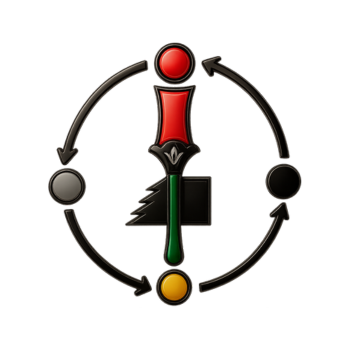-
“Amenhotep III was at peace with the world, having only to make one campaign to put down a revolt. Kemet was appreciated all over the world and the name Amenhotep III has been found in texts and on monuments in Crete, Mycenae, Anatolia (Turkey), Aetolia, Yemen, Babylon, and Assur. The King was the greatest builder the country had ever seen until this time. He covered Kemet and Nubia with monuments, including a temple with a colonnade dedicated to Tuthmoses III at Elephantine, and built a temple to Amen “Lord of the Ways” at Wadi es -Sebua and the temple of Heru at Aniba.
Many other temples were established by Amenhotep III in Mennefer; at Saqqara he started the Serapeum to the sacred Apis bulls; he raised colossal statues of baboons at Abydos, ordered the building of the Luxor temple as the southern harem of Amen-Ra and established at the temple of Mut of Asheru to the south of the Karnak temple a garden of 600 statues of the goddess Sekhmet.
Many of these statues are on display at Luxor Museum, the British Museum, and the Louvre. I have personally seen the one located in the shrine to Sekhmet at Karnak and have imagined the awe that must have come over the people when they saw all 600!. The only substantial remains of Amenhotep III’s mortuary temple are the two colossal statues called “The Colossi of Memnon” that originally stood in front of the pylon to the temple.
It is not known exactly why the Greeks many years later chose to call these statues Colossi of Memnon when in fact they were colossi of the great king Amenhotep III himself. Some have claimed that it was because, when the Kemetic people said that the name of the statues was “Nebmaatre,” the visiting Greeks heard it as “Mimmuria” and they related it to the name of the hero Memnon an Ethiopian, who was son of Aurora (the dawn) and commander of the Ethiopian troops in the Trojan War who was killed by Achilles. Who else could it have been for the Greeks? They were in Africa, the people they saw looked just like other Africans, and for them these had to be images of an Ethiopian.
Memnon was an African and so here in Kemet the Greeks mistook the statues of Amenhotep III for Memnon. Since that time these great colossi of the majestic king have been called the Colossi of Memnon. In 27 BCE an earthquake created a fissure in the blocks which caused a whizzing sound every morning as the moisture that had built up in the fissure during the night was evaporated by the sun.
Years later the Roman Emperor Septimus Severus as an act of respect tried to repair the fissure. Since that time the colossi have not spoken; it could be said that he sealed the tongue of the whistling colossi.1 Comment-
From the book titled: The History of Africa – The Quest for Eternal Harmony by Molefi Kete Asante (Second Edition).
-

